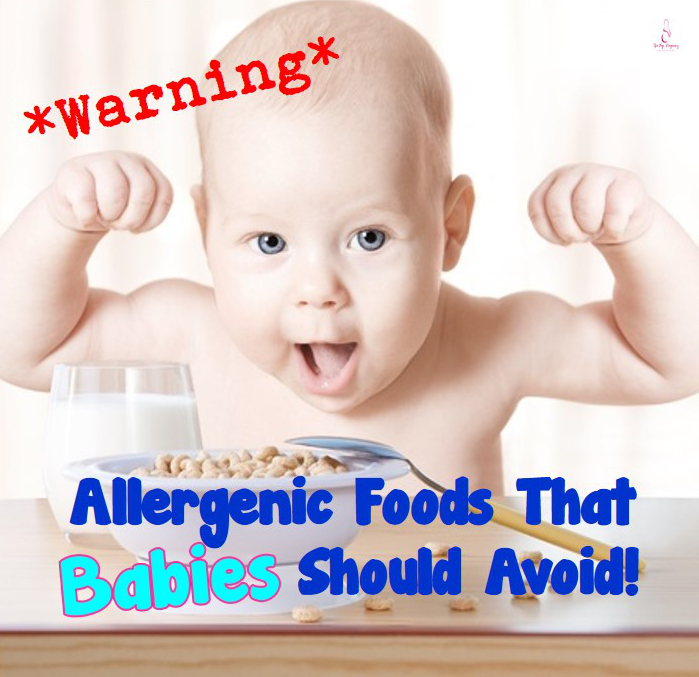
When your baby begins eating solids, it can be a fun yet nerve-wrecking adventure. For babies below one, eating solids is more of an experiential journey as part of their milestones and development. Menu-planning helps the parent or caregiver to note the foods that baby has tried and also allows monitoring should there be any allergy reactions to a particular food. General rule of thumb: Introduce a single food for 3 – 4 days before moving to the next food. Food allergies are common and this method allows you to track which foods are “safe” and which to avoid.
What symptoms should I look out for?
Food allergy symptoms usually make an appearance within the next couple of hours from the last feed of the suspected food. Observe your baby for these signs:
> hives around his mouth, nose and eyes, which may spread across his body
> swelling of his lips, eyes and face
> runny or blocked nose, sneezing, watery eyes
> itchy mouth and irritated throat
> nausea, vomiting and diarrhea
> coughing or wheezing
> difficulty in breathing
> loss of consciousness – in extreme case
1) Egg White
Introducing egg yolks to your baby around the 7-10 month mark is safe. Because egg whites are allergenic, most pediatricians won’t recommend offering a whole egg to babies below one. Additional tip: only offer fully cooked egg white and egg yolk and never give babies raw eggs to avoid an upset stomach and a possibility of allergy-triggered symptoms in your little one.
2) Strawberries
These pretty berries are loaded with Vitamin C, but can upset a baby’s tummy with its acidic content and potentially prompt rashes and allergy reactions. If you have a family history of allergies, it’s always good to take precaution.
3) Peanuts
Many adults are known to be allergic to peanuts; it’s common enough that even the packaging of certain snacks specifically include a caution to inform consumers about its nut content. If your family has a history of peanut allergy, it’s wise for baby to steer clear and introduce when baby is over 2 or 3 years of age. Peanut and peanut products are known to cause serious allergies. Consult your baby’s pediatrician if you are concerned.
4) Soy
Soy formula is usually an alternative offered in place of cow’s formula, when a child suffers allergy reactions to the latter. The allergy symptoms for soy formula is the same as for cow’s formula: rashes, vomiting, diarrhea, breathing difficulties and stomach cramp. If allergy issues occur when soy formula is offered, your pediatrician will recommend that baby try the hypoallergenic (H.A.) formula versions.
5) Honey
Coupled with baby’s immature intestinal tract, this sweet treat may also contain the spores of Clostridium botulinum, which could prompt infant botulism. Side effects include constipation, poor appetite, and lethargy. Our advice: hold it off till baby is slightly older to avoid this sticky situation.
6) Citrus Fruits
Orange, lemons and limes contain good doses of Vitamin C. With their high acidity levels, citrus fruits are likely to cause digestive upset. When purchasing pre-prepared or jar food for baby, some companies may add a squeeze of lemon or two, in the early stages purees. Check the label to look out for such mention if you plan to introduce citrus fruits at a later stage instead.
7) Cheese
Unpasteurized cheese poses slight food poisoning risk for babies. During pregnancy, unpasteurized cheese such as brie, is avoided for the same risk of potential bacterial introduction to immature tummies.
8) Seafood
Another common allergy source, seafood is classified as highly allergenic, which can result in severe reactions such as severe rash and swelling. If your family has a history of seafood allergies, it’s wise to avoid this till much later and careful introduction and monitoring of baby’s reactions.
In the meantime, have fun weaning your baby and discover the exploration journey with your little one!
By Cindy Gan






